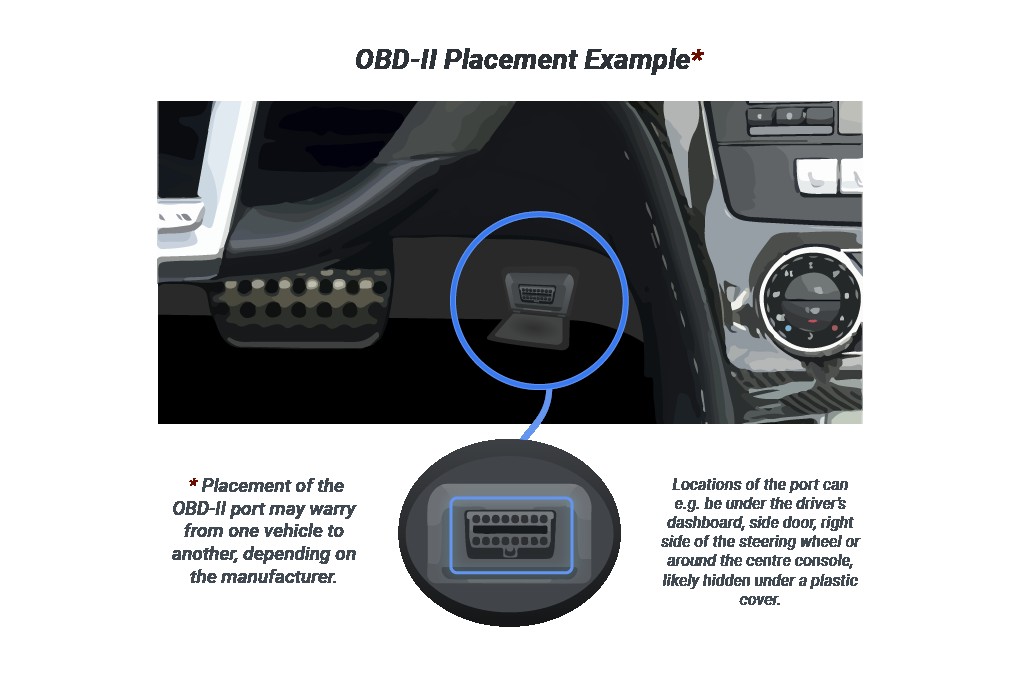Finding your car’s OBD2 port is crucial for diagnosing car problems and understanding its overall health. This guide will help you locate the OBD2 port in your vehicle and understand its function.
Common OBD2 Port Locations
The OBD2 port, also known as the diagnostic link connector (DLC), is typically located within the driver’s reach, often under the dashboard on the driver’s side. Here are some common locations:
- Under the Dashboard: This is the most common location. Look beneath the steering wheel column, around the knee bolster area.
- Near the Steering Wheel: The port may be located on the steering column itself, near the ignition switch or other controls.
- Inside the Center Console: Some vehicles have the port inside the center console, either under the armrest or near the front.
- Beneath the Ashtray: In older vehicles, the port might be hidden beneath the ashtray or cigarette lighter area.
- Behind a Panel or Fuse Box: Occasionally, the OBD2 port is concealed behind a removable panel or near the fuse box.
Using Your Vehicle’s Owner’s Manual
If you’re having trouble finding the OBD2 port, consult your vehicle’s owner’s manual. It should have a diagram or specific instructions on where to locate the port. The manual may refer to it as the “diagnostic connector” or “data link connector.”
Online OBD2 Port Locators
Several online resources can help you pinpoint the OBD2 port location for your specific car make and model. Simply search for “OBD2 port location [your car year, make, and model]” to find detailed information and even pictures.
Identifying the OBD2 Port
The OBD2 port is a standardized 16-pin connector, typically female, with a trapezoidal shape. It’s often covered by a small plastic cap to protect it from dust and debris.
Why is the OBD2 Port Important?
The OBD2 port provides access to your vehicle’s onboard computer, allowing you to:
- Diagnose Engine Problems: Retrieve diagnostic trouble codes (DTCs) that indicate malfunctions.
- Monitor Vehicle Performance: Track various parameters such as engine speed, coolant temperature, and fuel efficiency.
- Check Emissions Readiness: Verify if your vehicle meets emissions standards.
- Customize Vehicle Settings: Some vehicles allow for adjustments to certain features through the OBD2 port.
What if I Can’t Find My OBD2 Port?
If you’ve exhausted all options and still can’t find the OBD2 port, consult a professional mechanic or your car dealership. They have the expertise and resources to locate the port quickly.
Conclusion
Locating your car’s OBD2 port is a simple yet crucial step in understanding and maintaining your vehicle’s health. By using this guide and available resources, you can easily find the port and leverage its diagnostic capabilities to keep your car running smoothly.

